When it comes to running an online business, visibility is everything. If potential customers can’t find your Shopify store, they can’t shop with you. This is where Search Engine Optimization (SEO) comes into play. By optimizing your Shopify store for SEO, you can significantly improve your store’s visibility and draw in more qualified leads.
If you’re a Shopify store owner, startup founder, or digital marketer looking to boost your e-Commerce performance, keep reading. Here’s how to make sure your Shopify store stands out and ranks high on search engines.
What is SEO for Shopify?
Search Engine Optimization (SEO) is the process of tailoring your e-Commerce store to improve its ranking on search engines like Google. A higher ranking means greater visibility, which leads to more organic traffic and, ultimately, increased sales.
Optimizing a Shopify store goes beyond just adding keywords—it’s about enhancing the overall shopping experience for both search engines and your customers.
Here are the key strategies to maximize your Shopify store’s potential.
Key SEO Strategies to Boost Your Shopify Store
1. Keyword Research
Keyword research is at the core of every great SEO strategy. Use tools like Google Keyword Planner, SEMrush, or Ahrefs to identify relevant, high-traffic keywords with low competition in your niche. Target keywords that align closely with your products and your audience’s search intent.
For example, if you sell handmade jewelry, long-tail keywords like “handmade gold earrings” or “customizable silver bracelets” can bring highly targeted traffic.
2. Optimize Product Descriptions
Every product deserves its own unique, keyword-rich description. Avoid copying the default descriptions from suppliers—it’s bad for SEO and fails to make your product stand out. Instead, describe what makes each item special while naturally incorporating your target keywords.
For instance, instead of saying, “This is a stylish leather wallet,” you might write, “Our handmade leather wallet combines durability with timeless style—perfect for anyone looking for a sleek accessory.”
3. Improve Site Speed
A fast-loading website isn’t just important for user experience—Google uses page speed as a ranking factor. Optimizing your Shopify store’s speed could make or break your rankings.
- Compress images before uploading them to your site.
- Use a Content Delivery Network (CDN) to deliver your content faster.
- Leverage browser caching to store assets like logos and icons locally.
- Choose a reliable, fast hosting provider.
Need help? Shopify offers apps to help optimize site speed without technical headaches.
4. Mobile Optimization is Non-Negotiable
Over 50% of web traffic comes from mobile devices, making mobile optimization essential for ranking and user experience. Ensure your Shopify store looks sleek and functions flawlessly on any device.
Tactics for mobile SEO:
- Use responsive design themes that adjust to different screen sizes.
- Simplify navigation to make it easy for customers to browse products from a smaller screen.
- Test your store on multiple devices to ensure smooth usability.
5. Build High-Quality Backlinks
Backlinks—links from other reputable websites to your Shopify store—signal credibility to search engines. The more quality backlinks your store has, the higher it may rank.
How to get backlinks for your store:
- Partner with niche bloggers to feature your products in reviews.
- Contribute guest posts to industry websites.
- Encourage happy customers to share their experience on their websites or social media.
Avoid spammy or irrelevant links, as they can negatively impact your SEO efforts.
6. Use Alt Text for Images
Images are a vital part of e-Commerce, but search engines can’t “see” them the same way users can. That’s where alt text comes in. Add descriptive alt text (with relevant keywords) to help search engines understand what your images represent.
For example, instead of using alt text like “image123,” write “handmade gold earrings with a unique floral pattern.”
7. Publish High-Quality Content
Creating a blog for your Shopify store is one of the most effective ways to build authority and attract visitors. High-quality blog posts provide value to your audience and keep search engines happy.
Examples of content ideas for e-Commerce:
- “How-to” guides related to your products.
- Industry trends and insights.
- Seasonal buying tips.
A blog titled “How to Style Handmade Jewelry for Any Occasion” can boost organic traffic while promoting your products.
8. Implement Schema Markup
Schema markup (structured data) makes it easier for search engines to understand your Shopify store’s content. This helps search engines display rich snippets—additional details like star ratings, prices, or product availability—directly in search results.
Platforms like Shopify make it simple to integrate structured data, so don’t miss out on this strategic advantage.
9. Optimize Your URL Structure
Keep your URLs clean, concise, and descriptive. URLs like www.store.com/product/handmade-gold-bracelets are better for SEO (and user understanding!) than something obscure, like www.store.com/p12345.
Pro tip: Include primary keywords in your URLs to help boost rankings even further.
10. Monitor and Analyze Your SEO Performance
Regularly track your Shopify store’s SEO performance to keep improving. Use tools like Google Analytics, Google Search Console, and Shopify’s built-in analytics dashboard to measure key metrics such as rankings, organic traffic, and conversions.
Identify what’s working and adjust strategies to stay ahead in the competitive e-Commerce space.
Take Action Today to Boost Your Shopify Visibility
Optimizing your Shopify store for SEO takes effort, but the long-term rewards—higher visibility, increased traffic, and higher sales—are well worth it. Whether you start with something simple like alt text for your images or go all-in with schema markup and backlinking, every step gets you closer to a better online presence.
Make your Shopify store the one everyone finds and loves—start optimizing today!
We Want To Talk To You About Your Marketing Goals.
Let’s Supercharge Your Online Growth!












